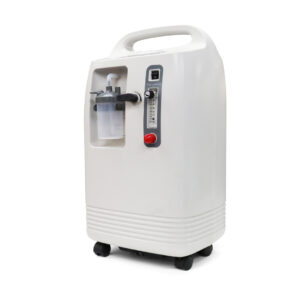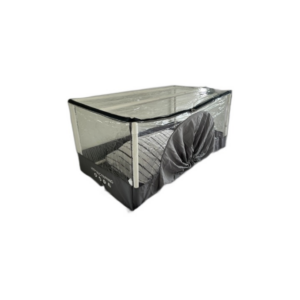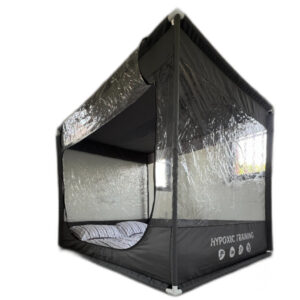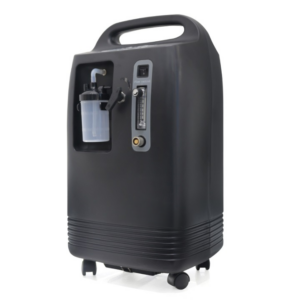High Altitude Training Methods
Suggested Training Method:
Sleeping at Altitude
Also known as “Live High” involves sleeping in an oxygen deprived environment continuously for more than 8 hours in combination with a hypoxic generator and a tent (head or bed tent).
How does Sleeping at ALtitude Work?
Simulating the effects of high-altitude training without physically being at a high elevation is made possible through sleeping in an altitude tent. These specially designed tents create a hypoxic environment in your bedroom, allowing you to sleep and recover in a low-oxygen setting. This unique sleeping arrangement can lead to various adaptations in your sleep and breathing patterns, resulting in significant improvements in your aerobic capacity and overall athletic performance.
The simulated altitude created in the tent induces physiological changes in your body, similar to the ones experienced at high elevations. This includes an increase in red blood cell production, improved oxygen delivery to the muscles, and enhancements in your body’s ability to utilize oxygen effectively. As a result, athletes who utilize altitude tents often experience enhanced endurance, reduced fatigue, and improved athletic performance.
Furthermore, sleeping in an altitude tent can have positive effects on sleep quality and respiratory function. The low-oxygen environment stimulates your body to adapt and optimize breathing patterns, leading to improved oxygen uptake and utilization even when not training. This can result in better overall rest and recovery, contributing to enhanced athletic performance during waking hours.
Altitude tents offer athletes the convenience of experiencing the benefits of high-altitude training in the comfort of their own homes. Whether you’re an elite athlete looking to gain a competitive edge or someone wanting to improve their fitness level, sleeping in an altitude tent can provide significant performance benefits.
By creating a hypoxic environment during sleep, altitude tents allow athletes to take advantage of sleep adaptations that can lead to improved aerobic capacity and enhanced performance. The convenience and ease of use make altitude tents an attractive option for athletes of all levels.
Benefits of Sleeping at Altitude
When you sleep at altitude, your body goes through a series of adaptations that enhance your physical capabilities. These adaptations include:
| Adaptations | Benefits |
|---|---|
| Increased EPO production | Enhanced oxygen-carrying capabilities of the blood |
| Promotion of red blood cell production | Improved aerobic performance |
Shop Sleeping at Altitude Products:
Exercise At Altitude
Also known as “Train High” this altitude training method involves training with a hypoxic generator and a mask or an altitude tent in combination with a hypoxic generator.
How does Exercising at ALtitude Work?
Exercising at altitude is a powerful method of hypoxic training that challenges the body and leads to valuable adaptations, resulting in improved performance, fitness, and overall health.
When you exercise at altitude, your body is exposed to reduced oxygen intake, pushing your cardiovascular system to work harder to deliver enough oxygen to your muscles. This stimulates both aerobic and anaerobic adaptations, enhancing your body’s ability to utilize oxygen efficiently and produce energy during physical exertion.
This type of training has numerous benefits beyond athletic performance. Exercising at altitude can also be advantageous for individuals recovering from injuries. By training at altitude, you can engage in intensified cardiovascular exercises while minimally stressing your musculoskeletal system. This allows you to maintain and even improve your fitness levels during the recovery process.
To engage in exercising at altitude, there are several equipment options available:
- Altitude Chamber: A multi-user system that simulates high-altitude conditions and allows you to exercise in a hypoxic environment.
- Exercise Cubicle Tent: A tent designed specifically for exercising, which can be set up in your home or training facility to create a hypoxic environment.
- Training Mask with Altitude Generator: A mask worn while exercising that connects to an altitude generator, simulating reduced oxygen conditions.
Exercising at altitude not only challenges your body but also helps you adapt and perform at your best. Whether you’re an athlete looking to enhance your performance or an individual seeking to improve your overall fitness and health, incorporating exercising at altitude into your training regimen can provide significant benefits.
| Benefits | Exercising at Altitude | ||
|---|---|---|---|
| Improved aerobic performance | ✓ | ||
| Aerobic and anaerobic adaptations | ✓ |
Shop Exercise at Altitude Products:
Intermittent Hypoxic Exposure
IHE or also Intermittent Hypoxic Exposure means your are alternating between breathing regular air as well as breathing hypoxic air (via a hypoxic generator) for a few minutes. A total session per day should not last longer than 30 minutes. This training method is not only great for training and improving your performance significantly, but it also very good for people with certain conditions such as Asthma, Diabetes, Heart conditions and others.
How does Intermittent Hypoxic Exposure Work?
When it comes to hypoxic training, one method that stands out is alternating altitude. This technique involves delivering acute hypoxic stimulus while at rest, making it an effective approach for various purposes.
Alternating altitude is not only used in medical treatments and therapies but also benefits mountaineers, athletes, and individuals in rehabilitation. By using a training mask connected to an altitude generator, individuals can alternate between wearing the mask and taking it off at timed intervals, thus exposing themselves to controlled hypoxic conditions.
“By alternating altitude, individuals can experience the benefits of hypoxic stimulus without the need for physical exertion. This makes it a valuable tool for athletes recovering from injuries who are unable to exercise yet still want to optimize their performance.”
In addition to its application in pre-acclimatization efforts, alternating altitude can also be used in conjunction with other hypoxic training methods to further enhance their effects. By incorporating alternating altitude into their training routine, athletes and mountaineers can simulate the physiological changes that occur at high altitudes, improving their ability to tolerate reduced oxygen levels.
It’s important to note that alternating altitude should be approached with caution and performed under proper guidance to ensure safety and maximize effectiveness. Consulting with medical professionals or experienced trainers can help individuals determine the appropriate hypoxic stimulus, duration, and frequency for their specific goals and conditions.
Benefits of Alternating Altitude Training
| Benefits | Description |
|---|---|
| Improved Oxygen Utilization | Helps the body adapt to reduced oxygen levels, enhancing overall oxygen utilization and efficiency. |
| Rehabilitation Support | Assists in the rehabilitation of injured athletes by providing a hypoxic stimulus without the need for physical exertion. |
| Enhanced Acclimatization | Prepares mountaineers and individuals for high-altitude environments by simulating physiological changes that occur at high altitudes. |
| Performance Optimization | Allows athletes to train at high-altitude conditions, improving their ability to tolerate reduced oxygen levels and enhancing their performance. |
Shop IHE Products:
Combining Methods
Depending on individual goals, it may be beneficial to combine two or more methods of hypoxic training as part of a training program. Combining methods can help optimize results and allow individuals to tailor their training program to their specific needs and goals. For example, one could combine exercising at altitude with sleeping at altitude to maximize the adaptations and benefits associated with both methods.
By combining methods, individuals can target different aspects of their fitness and performance, leading to comprehensive improvements. Exercising at altitude challenges the body’s cardiovascular system and stimulates aerobic and anaerobic adaptations. On the other hand, sleeping at altitude enhances erythropoietin production and oxygen-carrying capabilities, improving aerobic performance.
Furthermore, alternating altitude training can be added to the regimen, providing additional hypoxic stimulus while at rest. This method is commonly used by mountaineers and athletes seeking pre-acclimatization, as well as in medical treatments and the rehabilitation of injured athletes.
Combining methods allows individuals to access a wider range of training adaptations and benefits, optimizing their hypoxic training experience. By carefully designing a training program that incorporates various methods, individuals can achieve their desired results more effectively.
Example Hypoxic Training Program
- Exercising at altitude: 2-3 times per week for 60 minutes, focusing on both aerobic and anaerobic exercises.
- Sleeping at altitude: Every night for 8 hours, using an altitude tent connected to an altitude generator.
- Alternating altitude training: 3-4 sessions per week for 30 minutes each, using a training mask connected to an altitude generator.
By combining these methods, individuals can create a comprehensive hypoxic training program that targets various aspects of fitness and performance. It is important to note that the duration and intensity of each method should be tailored to individual capabilities and goals.
Benefits of Combining Methods
| Benefits | Exercising at Altitude | Sleeping at Altitude | Alternating Altitude Training |
|---|---|---|---|
| Improved aerobic performance | ✓ | ✓ | ✓ |
| Aerobic and anaerobic adaptations | ✓ | ||
| Erythropoietin production | ✓ | ||
| Injury rehabilitation support | ✓ |
Combining methods of hypoxic training can yield a range of benefits, including improved aerobic performance, aerobic and anaerobic adaptations, enhanced erythropoietin production, and injury rehabilitation support. By leveraging the unique advantages of each method, individuals can optimize their training program and achieve the desired results.




